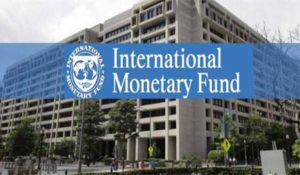The government on Friday unveiled the national intellectual property rights (IPR) policy to create a larger institutional framework to strengthen the IPR regime, with the slogan “Creative India, Innovative India”. While the policy focused on issues like expediting approval processes involving patents or trademarks and consolidating institutional mechanisms to create a robust IPR ecosystem, it refrained from suggesting any change to contentious provisions in the Patents Act, 1970, including Section 3(d) and compulsory licensing, despite concerns expressed by the US and Big Pharma.
Nevertheless, the policy provides for constructive engagement “in the negotiation of international treaties and agreements in consultation with stakeholders” and likely accession to some multilateral treaties that are in India’s interest. It also suggests tax incentives to boost R&D and the creation of a loan guarantee scheme to encourage start-ups and cover the risk of genuine failures in commercialisation based on IPRs as mortgageable assets.
The policy suggests making the department of industrial policy and promotion (DIPP) the nodal point coordinate for IPRs in India, even though the onus of actual implementation of the plans of action will be on the ministries/departments concerned in their sphere of work. So, for instance, the administration of the Copyright Act, 1957 (now under the department of higher education) and the Semiconductor Integrated Circuits Layout-Design Act, 2000 (under the department of electronics and information technology) will be brought under the DIPP.
This, it is believed, will lead “to synergetic linkage between various IP offices under one umbrella”. Interestingly, it seeks to protect traditional knowledge systems like Ayurveda, yoga and naturopathy — be it in oral or in codified form — from misappropriation, and also curb film piracy by suitably amending the Indian Cinematography Act, 1952.
Announcing the approval to the policy by the Cabinet, finance minister Arun Jaitley stressed that India’s IPR policies are WTO-compliant. He added that one must encourage invention of life-saving drugs and at the same time “we must also be conscious of the need to make it available at a reasonable cost so that drug cost does not become prohibitive as has become in some parts of the world”.
Responding to concerns expressed by developed countries like the US on Section 3(D) and compulsory licensing, Jaitley said: “We do believe that the balancing act which India has struck is responsible for lifesaving drugs available at a reasonable cost in India compared to the rest of the world. So, our model seems to be both legal, equitable and WTO-compliant.”
Section 3(d) prevents evergreening of drug patents. Apart from novelty and inventive step, the section provides for improvement in therapeutic efficacy a necessary condition for grant of patents when it comes to incremental inventions. Compulsory licensing allows domestic players to produce cheaper versions of patented drugs. The US and the EU have been pushing India to make appropriate changes to these provisions to boost innovation, R&D and foreign investment. Recently, releasing its annual 301 report, the US retained India on its priority watch list, citing “lack of sufficient measurable improvements” to the IP framework despite robust engagement and positive steps on intellectual property protection and enforcement by the Indian government in the last two years.
The finance minister said by 2017, trademarks can be registered within a month. Currently, in some cases, this process takes even a few years. According to Jaitley, there are seven objectives that guided the policy mechanism, which include IPR public awareness, stimulation of generation of IPRs, need for strong and effective laws and strengthening enforcement and adjudicatory mechanisms to combat infringements.
Hailing the move, industry body Nasscom said the new policy has captured issues, including difficulties that companies face in monetising intangibles like IPR, suitably and the proposal to create a “simple loan guarantee scheme to encourage start-ups” based on IPRs as mortgageable assets; financial support and securitisation of IPRs for commercialisation by enabling valuation of IP rights as intangible assets through of appropriate methodologies and guidelines, and enabling legislative, administrative and market framework are in the right direction.
The policy also puts a premium on enhancing access to healthcare, food security and environmental protection. It is expected to lay the future road map for intellectual property in India, besides putting in place an institutional mechanism for implementation, monitoring and review

Source: http://www.financialexpress.com/economy/govt-announces-new-ipr-regime/255072/






